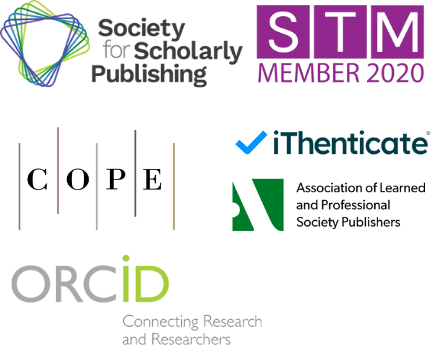Functional Coordination Polymers with Dual Catalytic Applications
DOI:
https://doi.org/10.71222/zvrb0y95Keywords:
coordination polymers, dual catalysis, metal-organic frameworks, heterogeneous catalysis, multifunctional materials, tandem reactionsAbstract
Functional coordination polymers have emerged as remarkable materials exhibiting dual catalytic capabilities that enable simultaneous or sequential transformations in complex reaction systems. These crystalline porous materials, constructed from metal ions or clusters connected by organic linkers, possess unique structural features including high surface areas, tunable pore environments, and diverse metal coordination sites that facilitate multiple catalytic functions. The integration of different catalytic functionalities within a single framework enables cascade reactions, tandem transformations, and multifunctional catalytic processes that would be difficult to achieve using conventional catalysts. This review examines the design principles underlying dual-functional coordination polymers, emphasizing how structural architecture, metal center selection, and ligand design contribute to multifunctional catalytic behavior. The synthetic strategies for creating coordination polymers with controlled dual functionalities are discussed, along with characterization approaches that reveal structure-activity relationships. Applications in various catalytic processes including organic transformations, environmental remediation, electrochemical reactions, and biomimetic catalysis are comprehensively analyzed. Special attention is given to systems demonstrating synergistic effects where dual functionalities enhance overall catalytic performance beyond simple additive contributions. The challenges associated with maintaining structural stability during catalytic processes and strategies for optimizing dual catalytic activities are addressed. This comprehensive analysis demonstrates that functional coordination polymers represent a powerful platform for developing advanced catalytic systems with multiple integrated functionalities.
References
1. N. Stock and S. Biswas, “Synthesis of Metal-Organic Frameworks (MOFs): Routes to Various MOF Topologies, Morphologies, and Composites,” Chemical Reviews, vol. 112, no. 2, pp. 933–969, 2012, doi: 10.1021/cr200304e.
2. S. Dutt, A. Kumar, and S. Singh, “Synthesis of Metal Organic Frameworks (MOFs) and Their Derived Materials for Energy Storage Applications,” Clean Technologies, vol. 5, no. 1, pp. 140–166, 2023, doi: 10.3390/cleantechnol5010009.
3. G. Camarillo-Martínez, E. Martínez-Cano, A. Zepeda-Navarro, J. L. Guzmán-Mar, and Egla Yareth Bivián-Castro, “Synthesis, Structure, Spectra, and Applications of Metal-Organic Frameworks: Basolite C-300,” International Journal of Molecular Sciences, vol. 26, no. 12, p. 5777, 2025, doi: 10.3390/ijms26125777.
4. G. Xie, W. Guo, Z. Fang, Z. Duan, X. Lang, and D. Liu et al., “Dual‐metal sites drive tandem electrocatalytic CO2 to C2+ products,” Angewandte Chemie, vol. 136, no. 47, p. e202412568, 2024, doi: 10.1002/ange.202412568.
5. M. Chegeni, M. Chegeni, and G. E. Zade, “Synthesis of a metal-organic framework with red mud for organic pollutant adsorption using response surface methodology for sustainable chemistry,” Scientific Reports, vol. 15, no. 1, p.32145, 2025, doi: 10.1038/s41598-025-17549-2.
6. L. Zhu, X.-Q. Liu, H.-L. Jiang, and L.-B. Sun, “Metal–Organic Frameworks for Heterogeneous Basic Catalysis,” Chemical Reviews, vol. 117, no. 12, pp. 8129–8176, 2017, doi: 10.1021/acs.chemrev.7b00091.
7. K. K. Gangu and S. B. Jonnalagadda, “A Review on Metal-Organic Frameworks as Congenial Heterogeneous Catalysts for Potential Organic Transformations,” Frontiers in Chemistry, vol. 9, p.747615, 2021, doi: 10.3389/fchem.2021.747615.
8. F. Ding, C. Ma, W.-L. Duan, and J. Luan, “Second auxiliary ligand induced two coppor-based coordination polymers and urease inhibition activity,” Journal of Solid State Chemistry, vol. 331, p. 124537, 2024, doi: 10.1016/j.jssc.2023.124537.
9. J. Lin, J. Zhou, C. Zhang, Y. Liu, S. Zhang, D. Zhang, and J. Luo et al., “Metal-organic framework boosts heterogeneous electron donor–acceptor catalysis,” Nature Communications, vol. 14, no. 1, p.7757, 2023, doi: 10.1038/s41467-023-43577-5.
10. F. G. Cirujano, R. Luque, and A. Dhakshinamoorthy, “Metal-Organic Frameworks as Versatile Heterogeneous Solid Catalysts for Henry Reactions,” Molecules, vol. 26, no. 5, p. 1445, 2021, doi: 10.3390/molecules26051445.
11. Balendra Balendra, R. Kalita, M. Ali, Sanyukta, M. Sevi, and K. Manna, “Multifunctional Manganese Coordination Polymer with Polar Solvent-Responsive Tunable Dielectric Properties and Selective Catalysis,” Journal of Materials Chemistry C, 2025, doi: 10.1039/d5tc02227d.
12. I. Dragutan, F. Ding, Y. Sun, and V. Dragutan, “Recent Developments in Multifunctional Coordination Polymers,” Crystals, vol. 14, no. 4, p. 301, 2024, doi: 10.3390/cryst14040301.
13. F. Ding, N. Su, C. Ma, B. Li, W.-L. Duan, and J. Luan, “Fabrication of two novel two-dimensional copper-based coordination polymers regulated by the ‘V’-shaped second auxiliary ligands as high-efficiency urease inhibitors,” Inorganic Chemistry Communications, vol. 170, p. 113319, 2024, doi: 10.1016/j.inoche.2024.113319.
14. R. Dalapati, J. Shi, M. Hunter, and L. Zang, “Dual-Functional Metal-Organic Framework for Efficient Removal and Fluorescent Detection of Perfluorooctanoic Acid (PFOA) from Water,” Journal of Materials Chemistry C, vol. 13, no. 32, pp.16753-16762, 2025, doi: 10.1039/d5tc01765c.
15. B. Lee, J. Bae, B. Go, M.-K. Kim, and J. Park, “Dual-functional metal-organic framework for chemisorption and colorimetric monitoring of cyanogen chloride,” Chemosphere, vol. 362, p. 142633, 2024, doi: 10.1016/j.chemosphere.2024.142633.
Downloads
Published
Issue
Section
License
Copyright (c) 2025 Ming Patel, Sofia Zhang, Hiroshi Tanaka (Author)

This work is licensed under a Creative Commons Attribution 4.0 International License.


